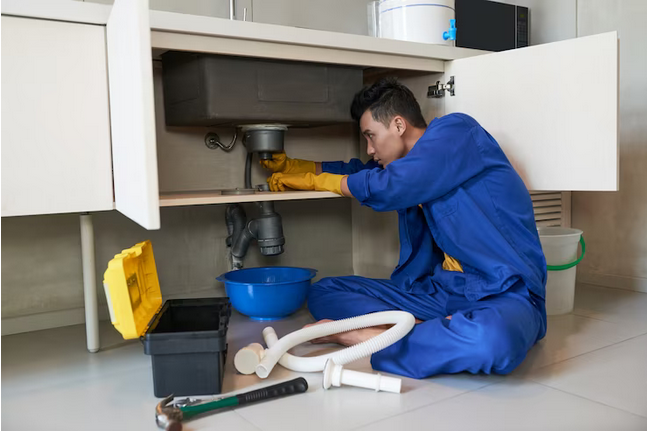Water damage is a pervasive and often devastating issue that can strike homes and businesses alike. In South Florida, a region susceptible to heavy rains, hurricanes, and tropical storms, the risk of water damage is particularly high. Understanding how to handle water damage and restoration in this unique environment is essential for homeowners and business owners alike. This comprehensive guide will provide you with the knowledge and resources needed to navigate the challenges of water damage restoration effectively in South Florida.
Understanding the South Florida Environment
South Florida's unique climate sets the stage for water damage risks. The region experiences a distinct wet season from June to November, marked by heavy rainfall and the threat of hurricanes. With a high water table and low-lying terrain, even minor rain events can result in flooding. Additionally, the region's subtropical climate fosters conditions favorable for mold growth, adding another layer of complexity to water damage restoration efforts.
Assessing Water Damage
The first step in addressing water damage is to assess the extent of the problem. It's crucial to act swiftly to prevent further damage and mitigate health risks. Here are the key steps:
Safety First: Before entering a water-damaged area, ensure it's safe to do so. Turn off the power to the affected area to avoid electrical hazards.
Document the Damage: Take photos or videos of the affected areas for insurance purposes.
Identify the Source: Determine the source of the water damage, whether it's from flooding, a burst pipe, roof leak, or sewage backup.
Categorize the Water: Water damage is categorized into three types: clean water, grey water (containing some contaminants), and black water (sewage or other highly contaminated water). Proper handling depends on the category.
Mitigation and Restoration
After assessing the damage, the next step is mitigation to prevent further harm and begin the restoration process. In South Florida, where mold growth can occur rapidly, swift action is critical:
Water Extraction: Remove standing water using pumps and vacuums. The longer water sits, the more extensive the damage and mold growth potential.
Drying: Use industrial-grade dehumidifiers and air movers to thoroughly dry affected areas. Mold thrives in humid environments, so thorough drying is essential.
Mold Prevention: Apply anti-microbial treatments to prevent mold growth. Regular inspections are necessary in South Florida's climate.
Structural Repairs: Repair or replace damaged structural elements such as drywall, flooring, and insulation.
Content Restoration: Clean and restore salvageable belongings, including furniture, electronics, and personal items.
HVAC Inspection: Check and clean your HVAC system, as mold and contaminants can spread through it.
Reconstruction: If extensive damage has occurred, reconstruction may be necessary. Work with licensed contractors to ensure proper restoration.
Dealing with Mold
Mold is a persistent issue in South Florida due to the high humidity levels. It can pose serious health risks and damage property if not addressed promptly and effectively. Here's how to deal with mold:
Professional Assessment: If you suspect mold, have a professional inspection to determine the extent of the problem.
Containment: Isolate the affected area to prevent the spread of mold spores.
Safe Removal: Mold removal should be performed by trained experts who use proper safety equipment and follow established protocols.
Prevention: Take steps to prevent mold from returning, including improving ventilation and reducing humidity levels.
Insurance and Financial Considerations
Water damage restoration can be costly, but insurance coverage can help offset expenses. Here are some insurance-related tips:
Review Your Policy: Understand your insurance policy, including coverage limits and deductibles.
Document Everything: Keep detailed records of the damage, including photos, videos, receipts, and communication with your insurance company.
File a Claim: Contact your insurance provider promptly to initiate the claims process.
Mitigate Further Damage: Take immediate steps to mitigate damage, as your policy may require this.
Get Multiple Quotes: When hiring restoration professionals, obtain multiple quotes to ensure a fair price.
Choosing a Restoration Professional
Selecting the right water damage restoration company is crucial for a successful recovery. Consider the following factors:
Experience: Look for a company with extensive experience in water damage restoration, especially in South Florida's unique climate.
Certifications: Ensure the company is certified and follows industry standards for restoration and mold remediation.
References: Ask for references or check online reviews to gauge the company's reputation.
Emergency Response: Availability and promptness in responding to emergencies are critical.
Licensed and Insured: Verify that the company is properly licensed and insured.
Conclusion
Water damage restoration in South Florida is a complex and urgent matter that demands careful planning and execution. The region's climate and susceptibility to flooding and mold growth make it essential to act swiftly and effectively when facing water damage. Understanding the assessment, mitigation, and restoration processes, as well as the importance of insurance and professional assistance, is vital for property owners in South Florida. By following the steps outlined in this guide and seeking help from experienced professionals, you can minimize the impact of water damage and safeguard your property's value and your family's health in this unique environment. Remember that swift and well-informed action is key to a successful recovery from water damage in South Florida.





Comments